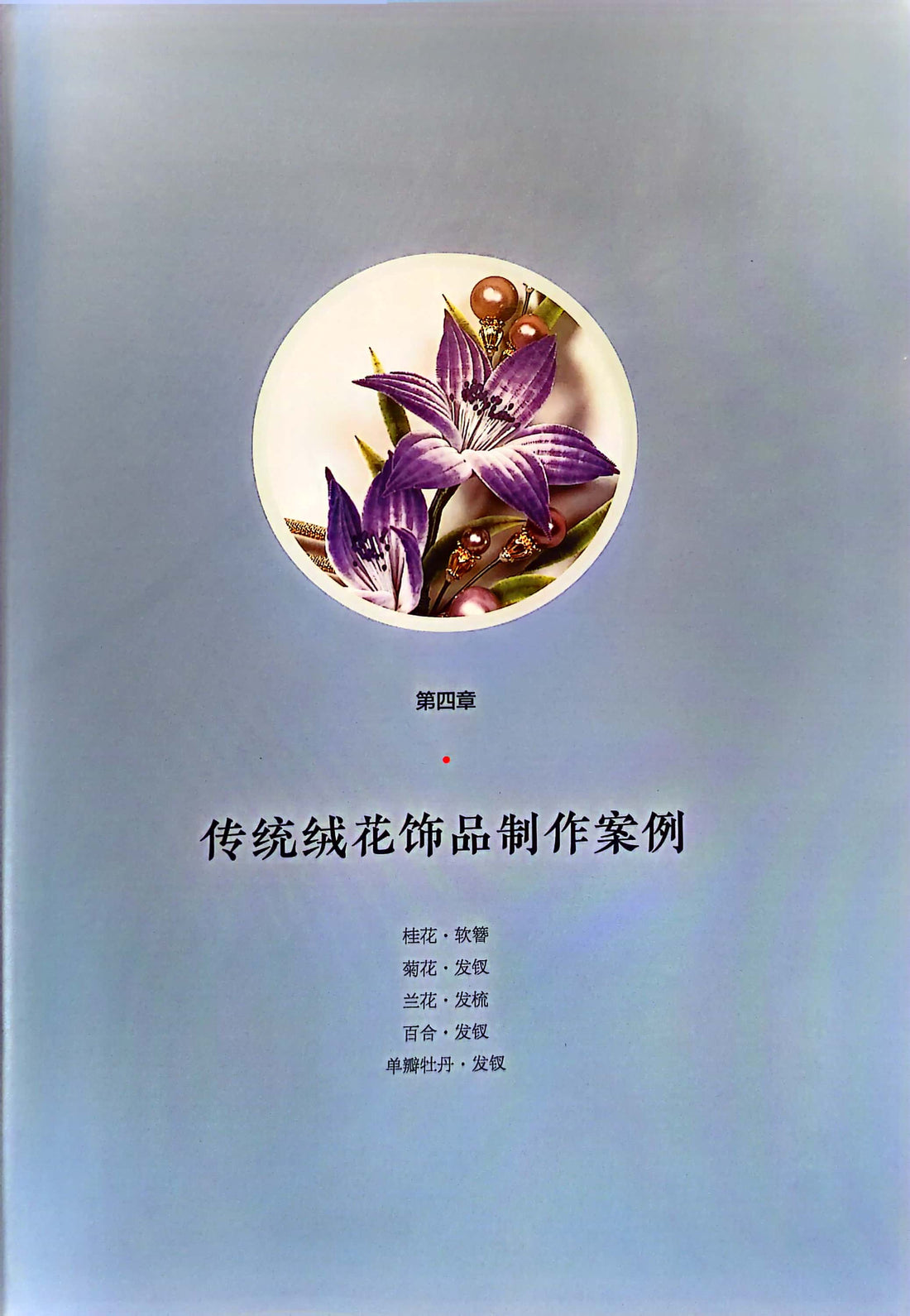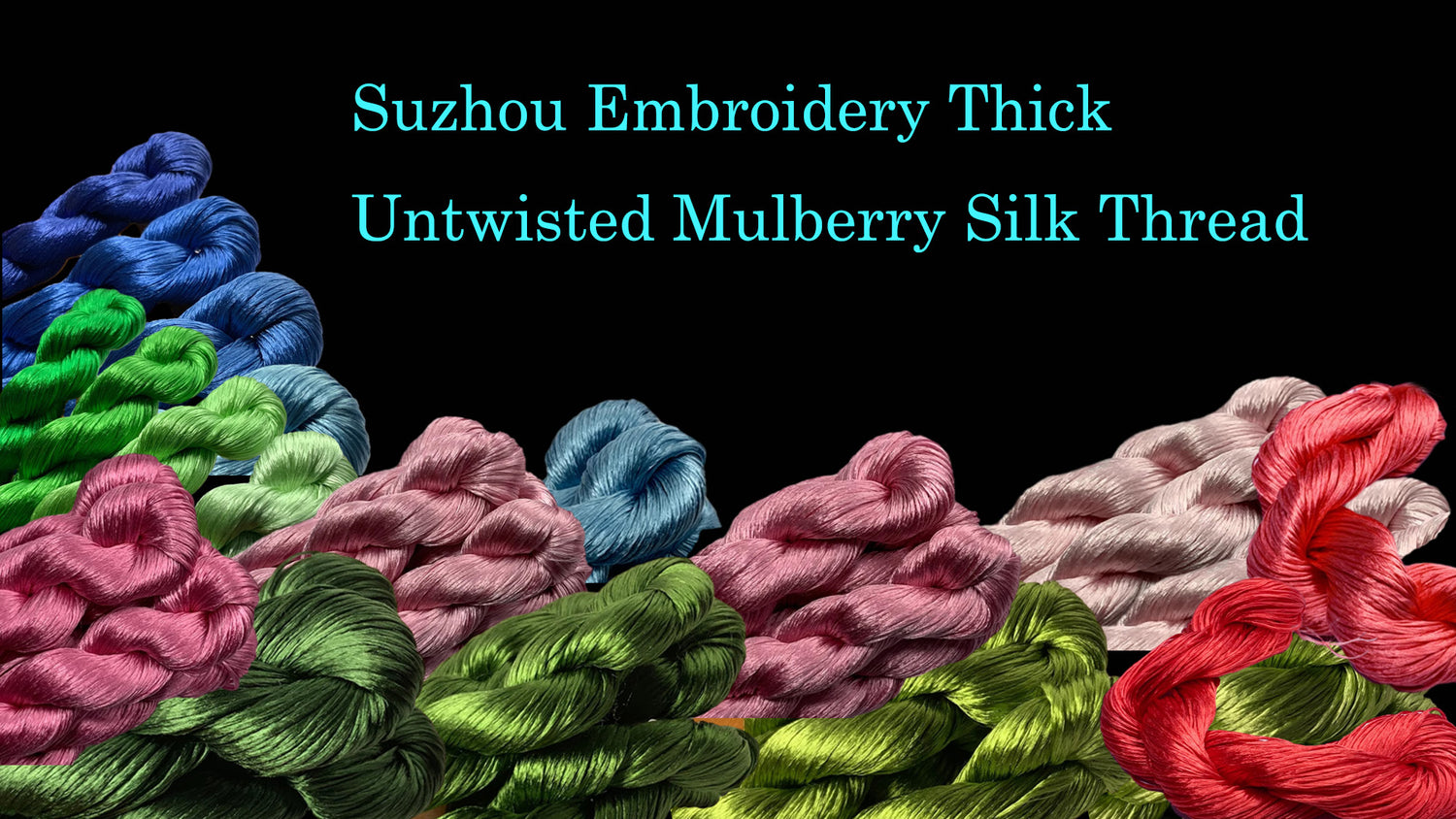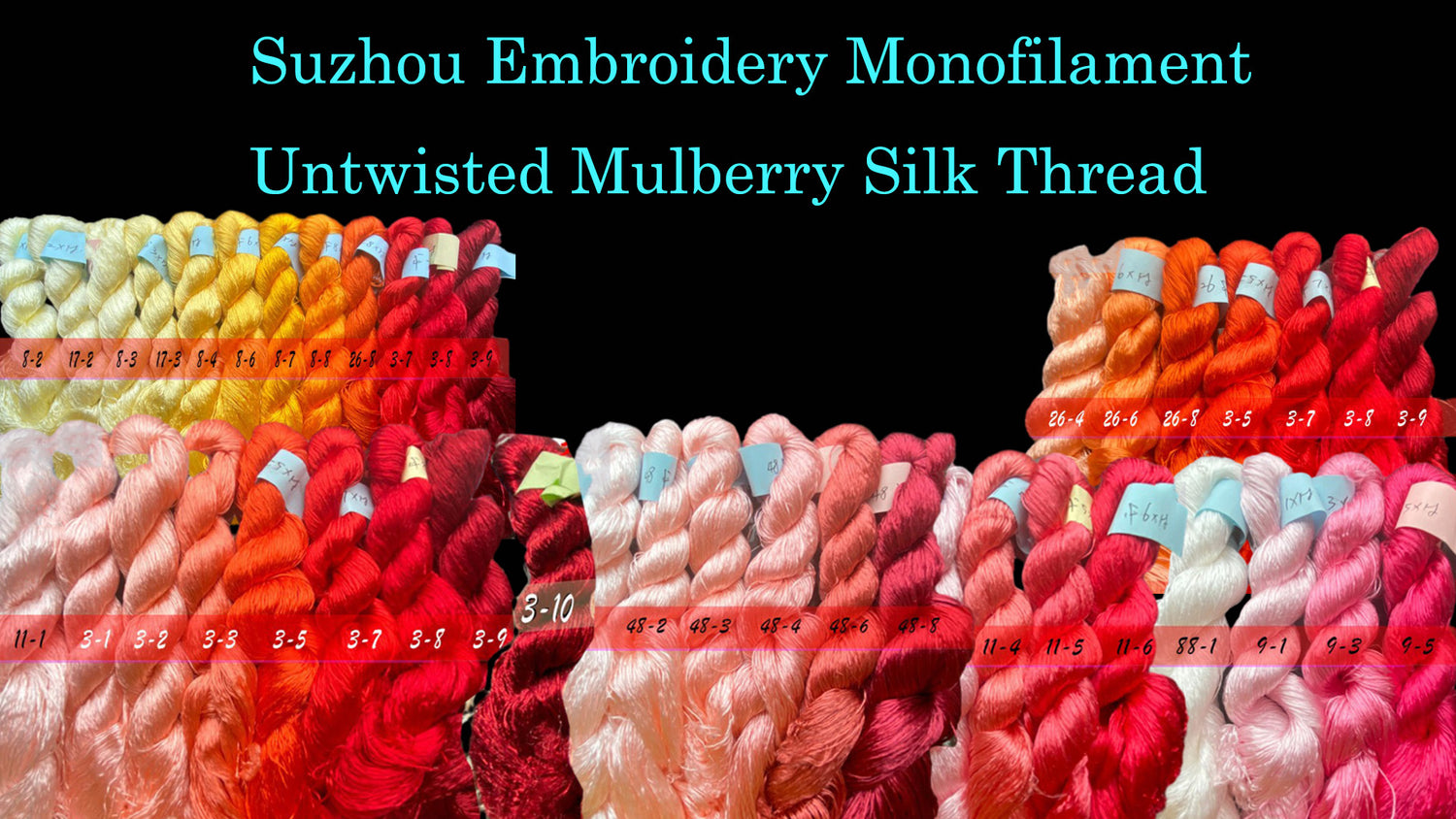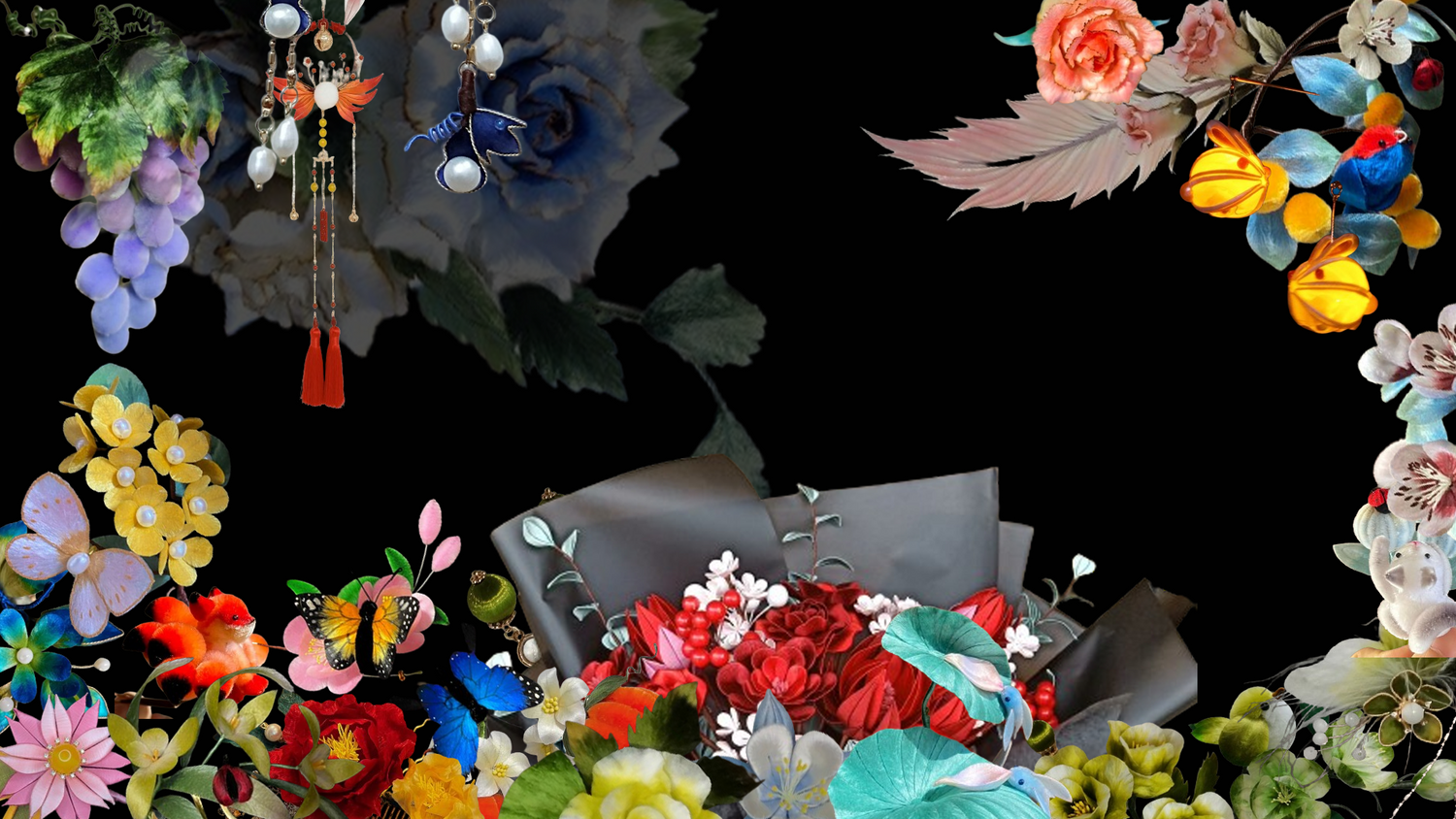
Osmanthus Hairpin - Handcraft Ronghua Tutorial
Share
"With autumn's fragrance of thirty thousand bushels, who will still look towards the moon?" "Why need shallow green and deep red hues, when it's naturally the best among flowers?" These lines of Chinese poetry allow us to appreciate the exquisite form and unique charm of the osmanthus flower. In this case, we use "osmanthus" as the creative element for Ronghua ornaments, designing and making a soft hairpin.
 Color Scheme Display
Color Scheme Display
A. Preparing Velvet Strips
 1 2
1 2
1. Prepare the velvet strips for leaves and petals. Osmanthus petals are small, and the leaves are slender, so the velvet strips for the petals can be narrower, while those for the leaves can be wider. Additionally, the petals are plain yellow velvet strips, while the leaves are gradient velvet strips ranging from green to light green.
2. Cut the velvet strips. The velvet strips for the leaves should be thinner, about 3mm wide; the velvet strips for the petals should be about 6mm wide.
B. Shaping and Styling the Velvet
 Display the process of shaping the flower and leaf velvet strips.
Display the process of shaping the flower and leaf velvet strips.
3. Trim the velvet strips according to the illustrated effect. The dark end of the leaf velvet strip is the bottom of the leaf, and the arc should be larger when trimming, with the top being more slender. Trim the petal velvet strips into an inverted teardrop shape, with a sharp bottom and rounded top.
C. Fixing the Velvet Strips
 4
4
4. Prepare plaster stamens and four petal velvet strips (a group of four petals), and fix a small amount of plaster stamens and petals to create an osmanthus flower.
 5
5
5. Take five leaf velvet strips, trim off the excess brass wire at the top, and first use one to set the highest point (the tip of the leaf), then decrease the height symmetrically from the middle to the sides, and fix them to make a leaf.
 6
6
6. Using the method explained earlier, prepare 16 osmanthus flowers and seven leaves of varying sizes, bending the leaves to create an arc. Note that leaves can be made in groups of five, four, or three velvet strips.
D. Arranging the Flowers
 7
7
7. Take five osmanthus flowers and tie them into a small bunch, then add leaves. During the tying process, stagger the positions; do not fix all the flower stems in the same position. Adjust the position and arc of the leaves as you add them.
 8
8
8. If the brass wire of the flower stems is not long enough, you can wrap an additional section of brass wire to lengthen the stems. Alternatively, you can trim the brass wire and then add more brass wire to extend the flower stems.
 9
9
9. When tying the three osmanthus branches, have a basic concept of the final product to make each branch unique.
 10
10
10. Arrange the finished osmanthus branches into the final desired effect, then tie and fix them in order. This osmanthus hair ornament is designed as a soft hairpin without adding a main component; simply wrap the remaining copper wires with velvet thread to form a long branch as the finishing touch.
 11
11
11.This is the finished Osmanthus Hairpin.








